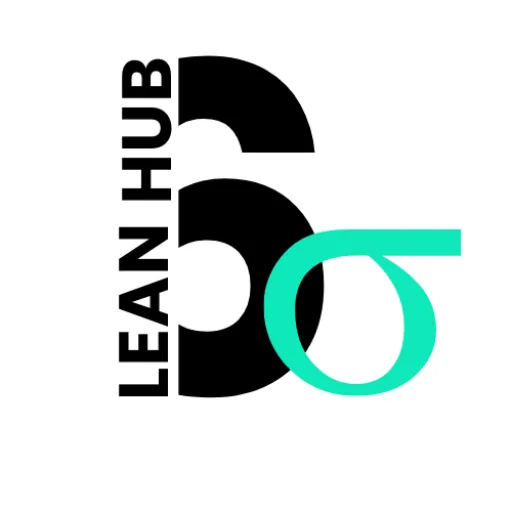Unlocking Efficiency: The Power of Value Stream Mapping
In the ever-evolving landscape of business operations, we find ourselves constantly seeking ways to enhance efficiency and reduce waste. One powerful tool that has emerged in this quest is Value Stream Mapping (VSM). This visual representation of the flow of materials and information through a process allows us to identify bottlenecks, redundancies, and areas for improvement.
By mapping out the entire value stream, we can gain a comprehensive understanding of how value is created and delivered to our customers. This approach not only helps us streamline processes but also fosters a culture of continuous improvement within our organizations. Value Stream Mapping originated from Lean manufacturing principles, which emphasize maximizing customer value while minimizing waste.
As we delve deeper into this methodology, we realize that VSM is not just a tool for manufacturing; it can be applied across various industries, including healthcare, software development, and service sectors.
By visualizing the steps involved in delivering a product or service, we can better align our resources and efforts with customer needs, ultimately leading to enhanced satisfaction and loyalty.
Key Takeaways
- Value Stream Mapping is a visual tool used to analyze and improve the flow of materials and information in a process.
- The benefits of Value Stream Mapping include identifying waste, improving communication, and increasing efficiency.
- Conducting a Value Stream Mapping exercise involves gathering a cross-functional team, mapping the current state, and identifying areas for improvement.
- Common pitfalls to avoid in Value Stream Mapping include not involving the right people, focusing only on the current state, and not following through with implementation.
- Implementing changes based on Value Stream Mapping involves creating an action plan, prioritizing improvements, and monitoring progress.
The Benefits of Value Stream Mapping
The advantages of Value Stream Mapping are manifold, and as we explore them, we can appreciate how this tool can transform our operations. First and foremost, VSM provides us with a clear visual representation of our processes. This clarity enables us to identify inefficiencies and areas where value is being lost.
By pinpointing these issues, we can take targeted actions to eliminate waste and streamline our workflows. The result is not only improved efficiency but also reduced costs, which can significantly impact our bottom line. Moreover, VSM fosters collaboration among team members.
As we engage in the mapping process, we bring together individuals from various departments and levels within the organization. This collaborative effort encourages open communication and knowledge sharing, leading to a more cohesive understanding of our processes. When everyone is on the same page regarding how value flows through our organization, we can work together more effectively to implement changes and improvements.
This collective approach not only enhances our operational efficiency but also strengthens our organizational culture.
How to Conduct a Value Stream Mapping Exercise
Conducting a Value Stream Mapping exercise requires careful planning and execution. To begin with, we must select a specific process or product line to focus on. This choice should be guided by factors such as customer impact, complexity, or areas where we suspect inefficiencies may exist.
Once we have identified the target area, we gather a cross-functional team that includes individuals who are directly involved in the process. Their insights will be invaluable as we work to map out the current state of the value stream. Next, we embark on the mapping process itself.
We start by documenting each step in the process, from the initial input to the final output. This includes capturing information about lead times, cycle times, inventory levels, and any delays or bottlenecks that occur along the way. As we create this visual representation, it’s essential to remain objective and focus on facts rather than assumptions.
Once we have completed the current state map, we can analyze it to identify areas for improvement and develop a future state map that outlines our desired process flow.
Common Pitfalls to Avoid in Value Stream Mapping
| Common Pitfalls | Impact |
|---|---|
| Lack of cross-functional collaboration | Leads to incomplete understanding of the value stream and potential improvement opportunities |
| Overcomplicating the value stream map | Causes confusion and makes it difficult to identify key areas for improvement |
| Ignoring the voice of the customer | Results in value stream maps that do not align with customer needs and expectations |
| Failure to update the value stream map regularly | Leads to outdated information and missed opportunities for continuous improvement |
| Not involving frontline employees in the mapping process | Misses out on valuable insights and buy-in from those directly involved in the value stream |
While Value Stream Mapping can be an incredibly effective tool, there are common pitfalls that we must be mindful of during the process. One significant challenge is the tendency to overlook the importance of involving all relevant stakeholders. If we fail to include individuals who are directly engaged in the process, we risk missing critical insights that could inform our mapping efforts.
It’s essential to foster an inclusive environment where everyone feels empowered to contribute their perspectives. Another pitfall is becoming too focused on creating a perfect map rather than using it as a tool for discussion and improvement. We may find ourselves spending excessive time refining the details of the map instead of leveraging it as a starting point for conversations about how to enhance our processes.
It’s crucial to remember that the primary goal of VSM is to facilitate understanding and drive action; therefore, we should prioritize progress over perfection.
Implementing Changes Based on Value Stream Mapping
Once we have completed our Value Stream Mapping exercise and identified areas for improvement, the next step is implementing changes based on our findings. This phase requires careful planning and prioritization. We should begin by selecting a few key improvements that will have the most significant impact on our processes.
By focusing on high-impact changes first, we can generate momentum and demonstrate quick wins that will encourage further buy-in from stakeholders. As we implement these changes, it’s vital to monitor their effectiveness continuously. We should establish metrics to track progress and assess whether the modifications are yielding the desired results.
Regular check-ins with our team will help us stay aligned and address any challenges that arise during implementation. Additionally, fostering a culture of continuous improvement means encouraging feedback and being open to making further adjustments as needed.
Case Studies of Successful Value Stream Mapping
Streamlining Production in the Manufacturing Sector
A company specializing in automotive parts used this methodology to optimize their production process. By mapping out their value stream, they identified several bottlenecks that were causing delays in delivery times. After implementing targeted improvements based on their findings, they reduced lead times by 30% and significantly increased customer satisfaction.
Enhancing Patient Admission in the Hospital Industry
A hospital used Value Stream Mapping to improve its patient admission process. By engaging staff from various departments in the mapping exercise, they uncovered inefficiencies that were leading to long wait times for patients. Through collaborative efforts and targeted changes, they were able to reduce admission times by 40%, resulting in improved patient experiences and better resource utilization within the hospital.
Transformative Results Across Sectors
These case studies demonstrate the transformative potential of this methodology across different industries. By identifying and addressing inefficiencies, organizations can achieve significant improvements in lead times, customer satisfaction, and resource utilization.
Tools and Software for Value Stream Mapping
As we embrace Value Stream Mapping in our organizations, it’s essential to leverage tools and software that can facilitate the mapping process. Various digital solutions are available that allow us to create dynamic value stream maps with ease. These tools often come equipped with features such as drag-and-drop functionality, collaboration capabilities, and data integration options that enhance our mapping efforts.
Some popular software options include Lucidchart, Miro, and Microsoft Visio. These platforms enable us to visualize our processes effectively while also allowing for real-time collaboration among team members. Additionally, some specialized Lean management software offers built-in templates for Value Stream Mapping, making it easier for us to get started without having to create maps from scratch.
Harnessing the Power of Value Stream Mapping
In conclusion, Value Stream Mapping stands out as a powerful methodology that can drive significant improvements in our organizations. By providing us with a clear visual representation of our processes, VSM enables us to identify inefficiencies and areas for enhancement effectively. The collaborative nature of this approach fosters teamwork and communication among stakeholders, ultimately leading to a culture of continuous improvement.
As we implement changes based on our mapping exercises and learn from successful case studies across various industries, we can harness the full potential of Value Stream Mapping to optimize our operations. By leveraging modern tools and software designed for this purpose, we can streamline our efforts even further. Ultimately, embracing VSM allows us not only to enhance efficiency but also to deliver greater value to our customers—an outcome that benefits everyone involved in the value creation process.
FAQs
What is Value Stream Mapping (VSM)?
Value Stream Mapping (VSM) is a lean management tool used to visualize and analyze the steps required to deliver a product or service to a customer. It helps identify waste and inefficiencies in the process and provides a framework for improvement.
What are the benefits of Value Stream Mapping?
Some of the benefits of Value Stream Mapping include identifying and eliminating waste, improving process flow, reducing lead time, increasing productivity, and enhancing overall efficiency.
How is Value Stream Mapping used in business?
Value Stream Mapping is used in business to identify and analyze the current state of a process, visualize the flow of materials and information, and develop a future state map to guide improvement efforts. It is often used in manufacturing, healthcare, and service industries.
What are the key components of Value Stream Mapping?
The key components of Value Stream Mapping include mapping the current state and future state of the process, identifying value-added and non-value-added activities, analyzing process flow, and developing an action plan for improvement.
What are some common symbols used in Value Stream Mapping?
Common symbols used in Value Stream Mapping include process boxes, inventory triangles, transportation arrows, and information flow arrows. These symbols are used to represent different activities and flows within the value stream.






